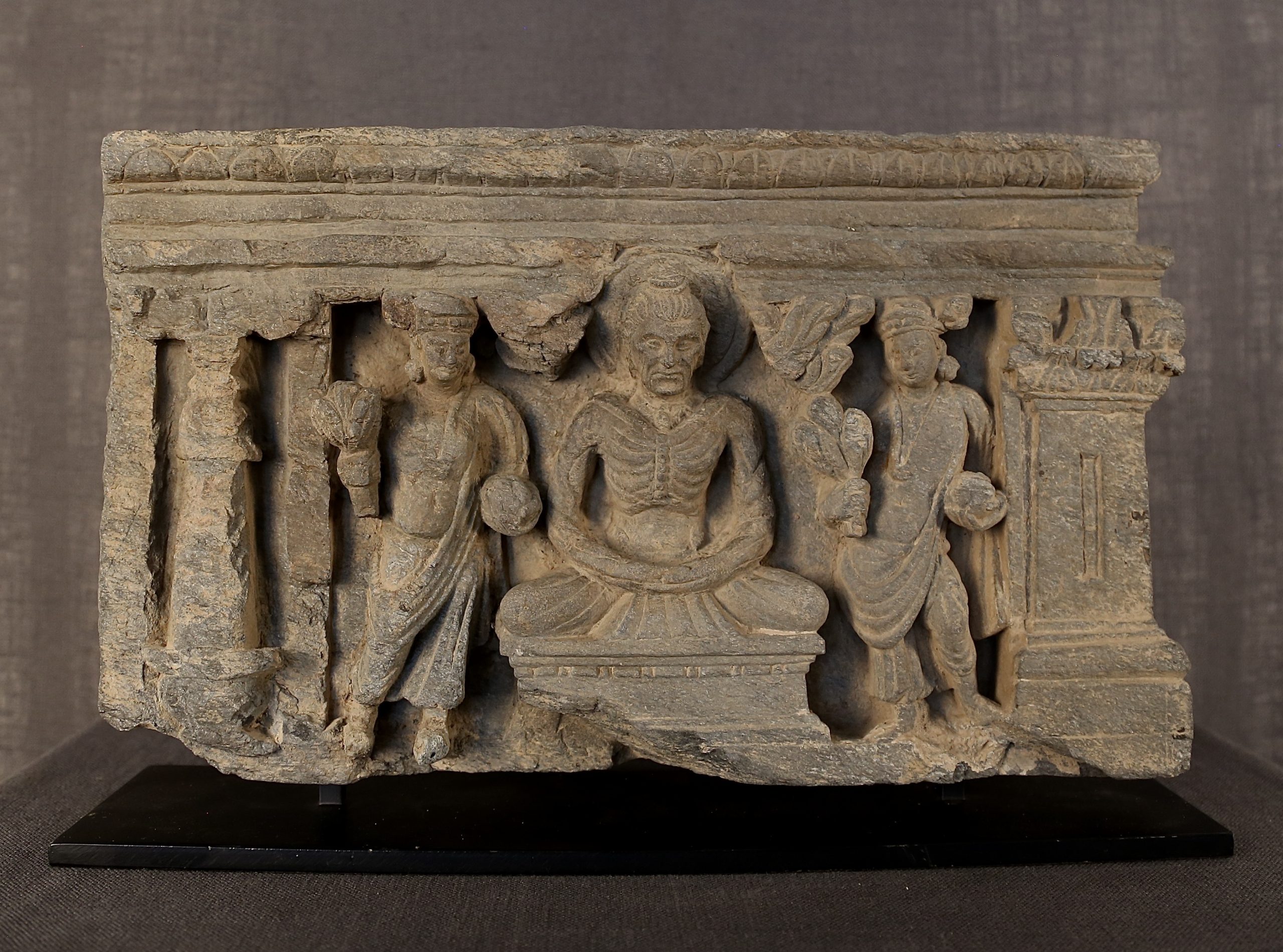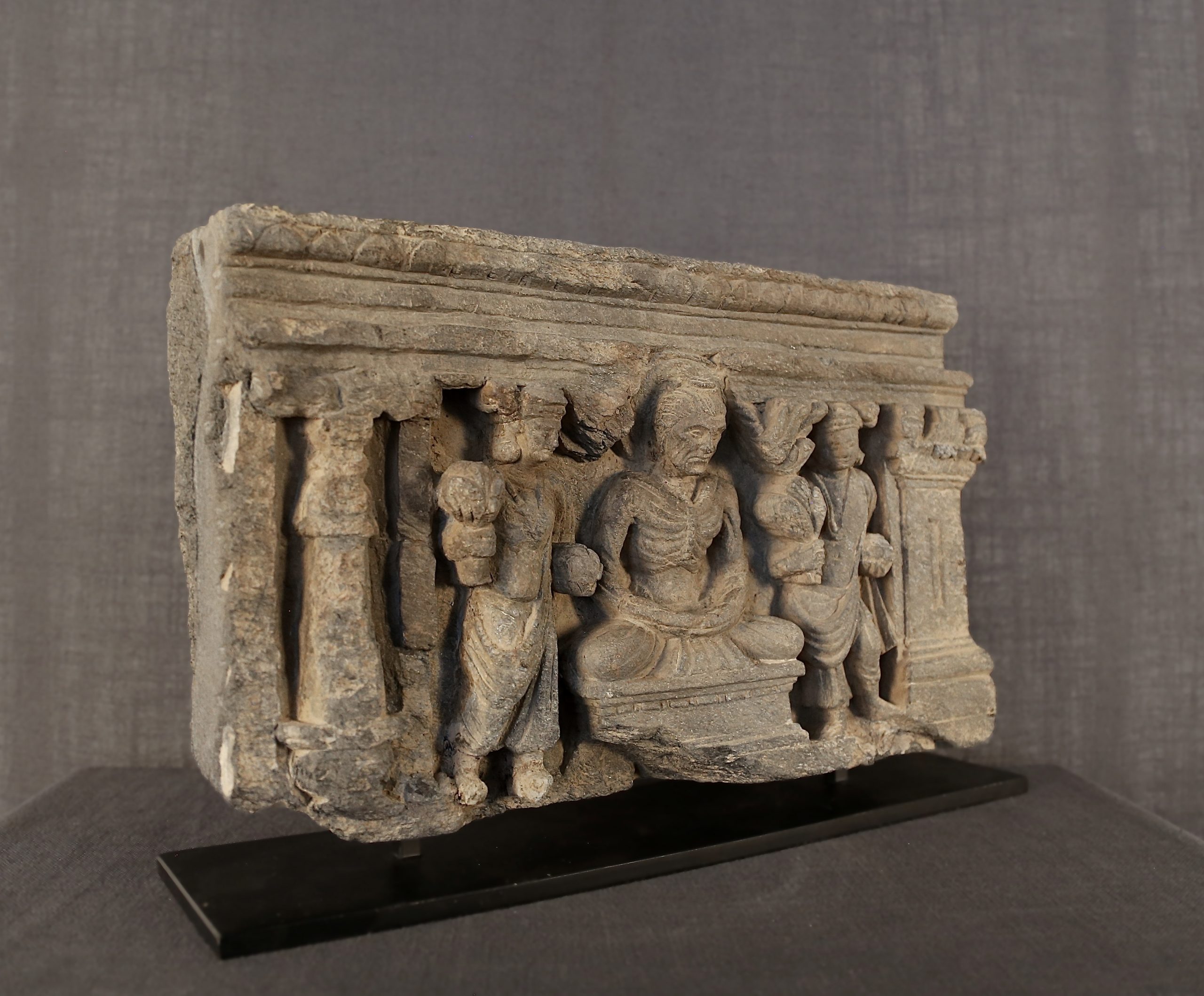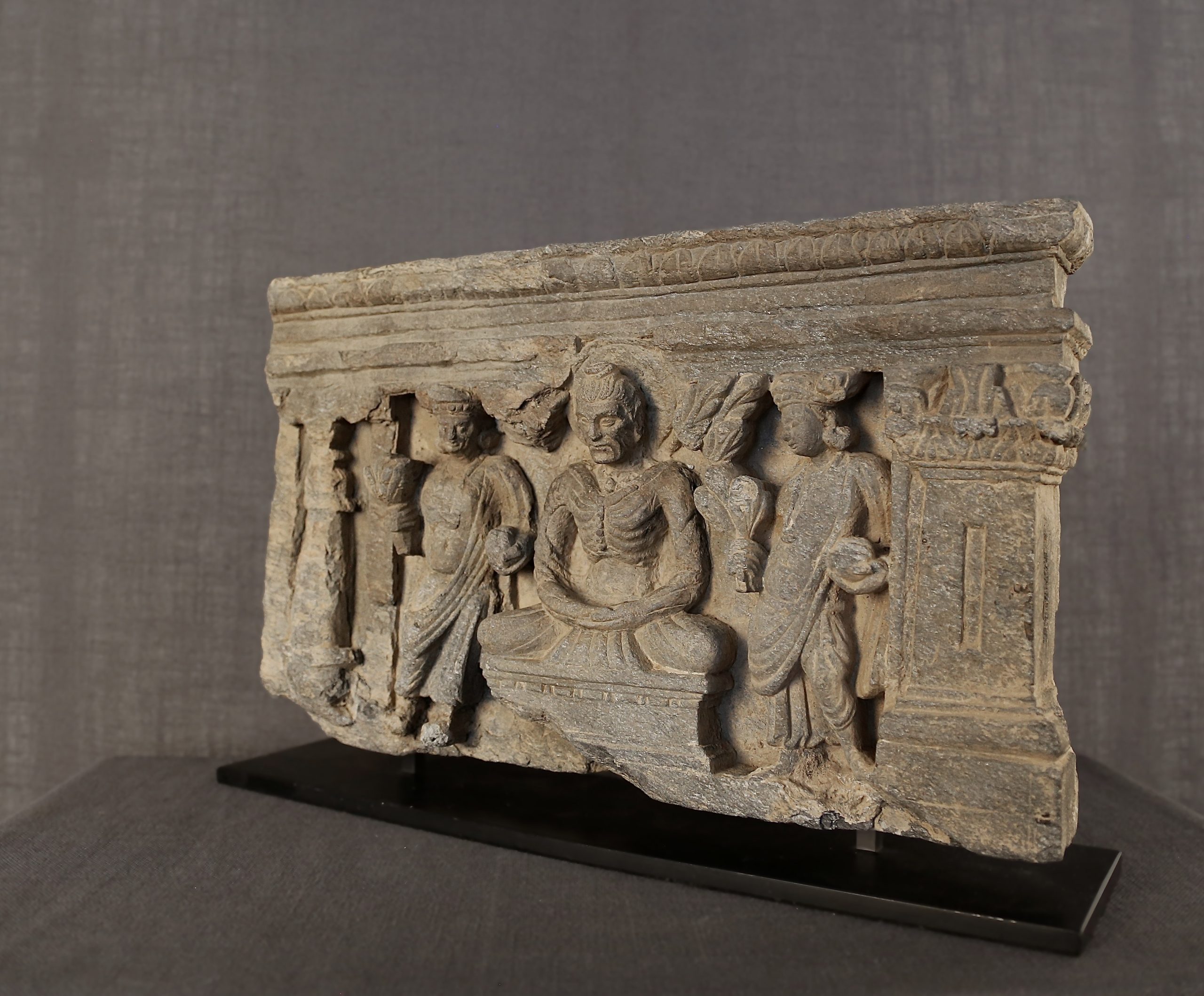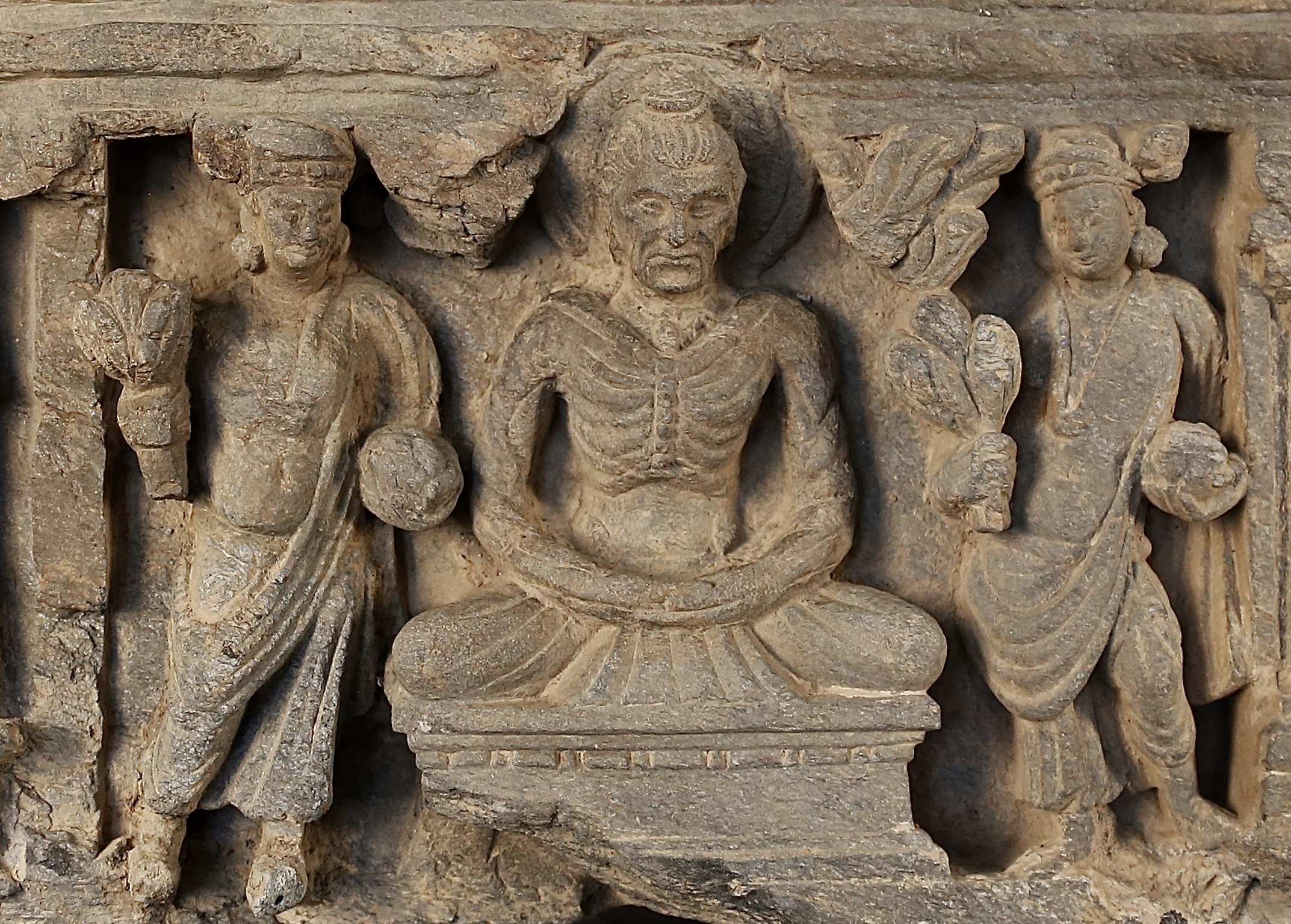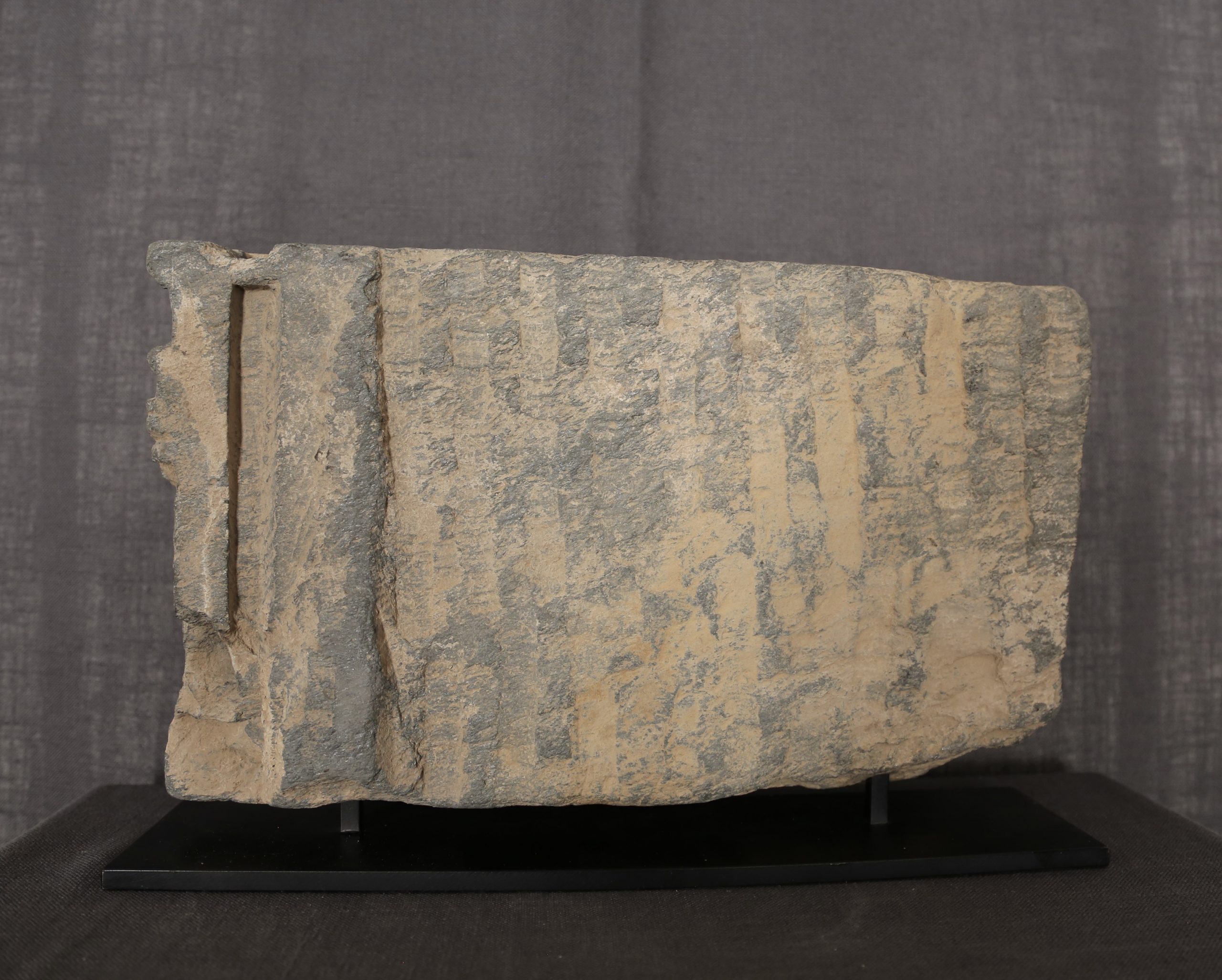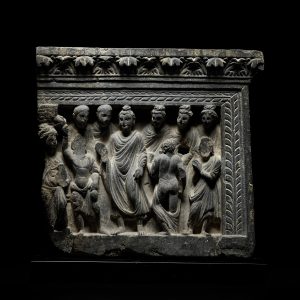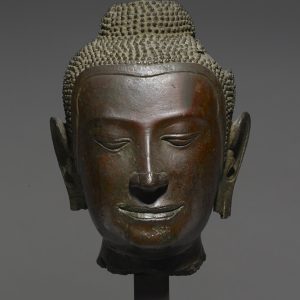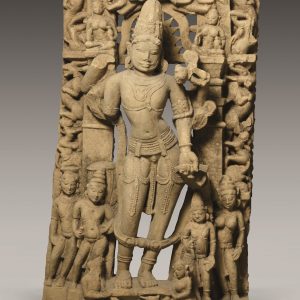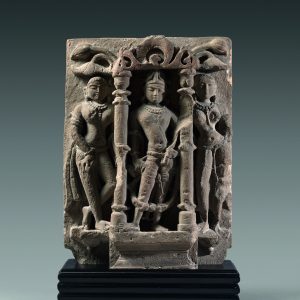Frieze of the Emaciated Buddha
Schist
Ancient province of Gandhāra
Circa 3rd century
D. 22 x 37 cm or 8 ⅝ x 14 ⅝ in
Description
The Buddha “at death’s door”: a spectacular iconography
This impressive representation of Śākyamuni Buddha before his Enlightenment shows him in a state of extreme emaciation. His ribcage, his muscles appear under his taut skin, while his facial features are heavily emaciated, his cheeks hollowed out and his cheekbones protruding. In conformity with the stylistic codes of the Gandhāra school, his wavy hair incorporates his cranial protuberance (uṣṇīṣa) – a symbol of his great wisdom – into a bun, while at the back a halo further emphasizes his status as a “great man” (mahāpuruṣa). Depicted seated with his hands in his lap in a meditative position (dhyānasana), his posture is dramatically still. He is barely clothed in a piece of fabric that falls to the front of the throne. This most total deprivation corresponds to a very specific episode in the life of the historical Buddha: having renounced his princely status and in his spiritual quest to attain Enlightenment, Śākyamuni then engages in a particularly exhausting asceticism leading him almost to death. On either side stand two devotees bearing floral offerings, both dressed in Indian style, the torso bare, wearing a long scarf, rich jewelry and sophisticated headdresses.
A typically Gandhāran artwork
It was in Gandhāra that the iconography of the Buddha in human form was established, and it was again in Gandhāra that the most spectacular sculptures figuring the emaciated Buddha were made. The Gandhāra school emphasizes the Buddha’s last existence, as well as his previous lives or jātaka. The texts of the Lalitavistara Sūtra (in the case of this stele) or Divyāvadāna are literally put into image in this art, which develops a syncretic style. This syncretism is manifested in particular in the presence of Greek pilasters and columns that are used to partition and punctuate the different moments of a narrative, as is the case here. Moreover, the composite capitals with acanthus motifs testify to the Hellenistic and Roman stylistic influence that characterizes this unique art.
A rare representation
If the figure of the emaciated Buddha is an emblematic image of Gandhāran art and undeniably marks the minds by its great visual power, examples of this iconography in museums or private collections remain very rare. A few reproductions of isolated statues can be found in the literature, but narrative friezes are even rarer and this therefore underlines the exceptional character of this one. The great care that has been taken in the representation of the Buddha, the significant size of the figures and the good condition of the piece are all qualities that should be noted.

